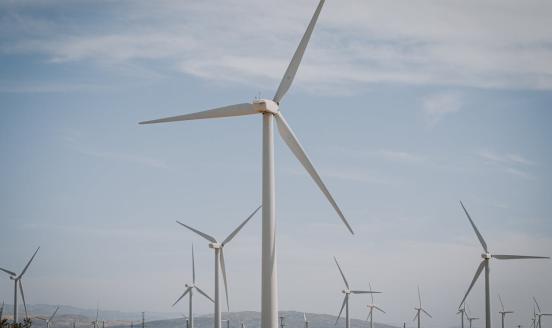Climate migration: what do we really know?
While uncertain, studies suggest that climate change will cause significant internal and international migration over the next century.

How can climate change affect migration?
Migration comes in many forms – temporary or permanent, local, rural-urban or international, forced or voluntary – and happens for many reasons – economic or political, or because people are fleeing from acute violence or natural disasters. The ways in which climate change could affect migration are therefore complex.
The academic literature distinguishes between impacts from fast-onset events like hurricanes, and slow-onset events like declining agricultural yields or desertification. The former usually have a direct impact resulting in forced, temporary and local displacement, whereas the latter more often have an indirect economic impact causing long-term, gradual and often voluntary migration. Rising sea levels, although a slow-onset event, can nevertheless directly result in forced and local migration, and threatens many densely populated areas worldwide. Moreover, over time the frequency of climate-related natural disasters is expected to increase, which raises questions about the impact of repeated fast-onset events.
Another layer of complexity is added by the fact that migration responses differ between individuals, for example because wealthier migrants can afford to move further, while poor farmers might not be able to move at all if their incomes decline due to climate change. Individuals from more developed countries may not even need to move, as their incomes do not depend heavily on agriculture or because they have the means to adapt to the effects of climate change.
What do empirical studies say?
The complex reality of migration (and the lack of adequate historical data to capture incipient climate change and consistent data on migration) is mirrored by the contrasting results of empirical studies and models that try to estimate past or future effects of climate change on migration. One 2016 study, for example, found that in middle-income countries rising long-term average temperatures increase migration from rural areas to cities, as well as migration to nearby countries. In poor countries, it found a negative effect for both internal and international migration, which is attributed to exacerbated income constraints on poor agricultural workers. Other studies find positive effects of weather anomalies on migration both within and from sub-Saharan Africa, suggesting that income constraints are not absolute. Another 2015 paper did not find any direct effect of long-term climate factors on international migration but suggested that natural disasters and rainfall shortages can have an indirect effect through income differentials.
What does this mean for migration to Europe?
Unsurprisingly, the answer is not entirely clear. In line with the idea of income constraints as well as restrictive migration policies, most of the literature suggests that migration from developing countries in response to climate change will grow but will be mostly internal or towards neighbouring countries. Current observations seem to support this. The 2016 study found that climate change only boosts international migration from middle-income countries to similar, nearby countries, which mostly excludes OECD countries as a destination. Similarly, the 2015 paper only reported some evidence for south-south migration, rather than migration to high-income countries. The IPCC therefore states that there is only low confidence about climate change contributing to migration to Europe.
However, the extent to which findings based on historical data will hold in the future is debatable. Many low- and middle-income countries have become more prosperous since the start of this century, which may have eased potential financial constraints on migration. Moreover, globalisation has already facilitated migration by creating migrant networks in OECD countries, which can support aspiring migrants both practically and financially.
Predictions of climate migrant numbers are often quoted to raise alarm, as migrants are expected to come primarily from the regions surrounding Europe: Africa, the Middle East and Central Asia. For example, a report by the International Organisation for Migration is sometimes quoted claiming that up to 1 billion people will be displaced by 2050. What it actually tells us is that no one really knows how many people will be on the move. 200 million is an accepted figure, but the range of estimates goes from 25 million to 1 billion by 2050. It also depends on which scenario materialises for climate action and global development.
The high estimate of 1 billion comes from a Christian Aid report, but this report in fact says that ‘only’ 250 million people will be displaced by climate change-related phenomena. The other refugees are displaced by (possibly related) conflicts and natural disasters (100 million) and development projects (645 million). While this is worrying from a humanitarian point of view, the implications for European migration policies may be less severe, as very few of those will leave their own countries.
Similarly, the Institute for Economics and Peace says that 1.2 billion people will be at risk of displacement due to climate change by 2050. However, the report does not say these migrants will all move to Europe or other developed regions, merely that this many people will be living in countries that lack sufficient climate resilience. Another recent report by the World Bank estimates that by 2050, between 125 and 216 million climate migrants could actually move internally in low- and middle-income countries depending on climate outcomes. It does not say how many migrants are expected to move internationally.
Estimates of future climate migration to Europe are rarer. Model estimates in one study put the total number of climate migrants over the twenty-first century between 200 and 300 million, 78% of which is internal, while the rest goes to OECD destinations. Importantly, conflicts triggered by climate change could force more than 50 million additional climate migrants to move during this century. In that case, most of these migrants are expected to move to Europe according to the model.
Finally, a study extrapolating historical data on temperatures and asylum applications estimated that by the end of the century the EU will receive around 100,000 additional asylum applications per year under the currently most likely climate scenario, an increase of 28% compared to 2017.
And within Europe?
Interestingly, the literature on climate-related migration within Europe is scarce and inconclusive. It does not predict large effects, and any migration taking place would be mostly rural-urban. This does not exclude more significant changes in certain regions. Declining agricultural productivity is one of the most prominent factors in climate-induced migration. One might therefore argue that pressure to migrate might increase in rural areas in Europe’s southernmost regions (especially in EU candidate countries), which at least today depend much more on agricultural employment than the EU average and will also be most exposed to warming temperatures and droughts. Whether people will move to cities within the same country or to another EU country is likely to depend mostly on economic factors.
Figure 1: % share of total employment in agriculture, forestry and fishing by region (NUTS2), data for 2019. Source: Eurostat.
Figure 2: projected % change in annual precipitation by mid-century (2041-2070) by region (NUTS2), in a high-emission scenario (RCP 8.5). Source: Climate-ADAPT.
Conclusion
Overall, the literature on climate-induced migration suggests that people are moving already because of climate change and that increasing numbers will do so in the future, either voluntarily or not. Quantifying future migration is tricky due to complexity and data limitations, and outcomes depend on future climate scenarios and on the definition of a climate migrant. It is also not clear what the main driver will be (sea levels, income losses or instability etc), whether it will be poorer or more prosperous migrants that move, and how many will travel across borders, including to Europe. Most displaced persons may not travel far, but it does seem reasonable to expect a higher number of arrivals in Europe if climate change triggers instability and conflicts over resources in the surrounding regions. Within Europe, only the southernmost regions are likely to see emigration to nearby cities or to other EU countries, which may require a response at the EU level.
Recommended citation:
Lenaerts, K. and S. Tagliapietra (2022) ‘Climate migration: what do we really know?’, Bruegel Blog, 25 April



